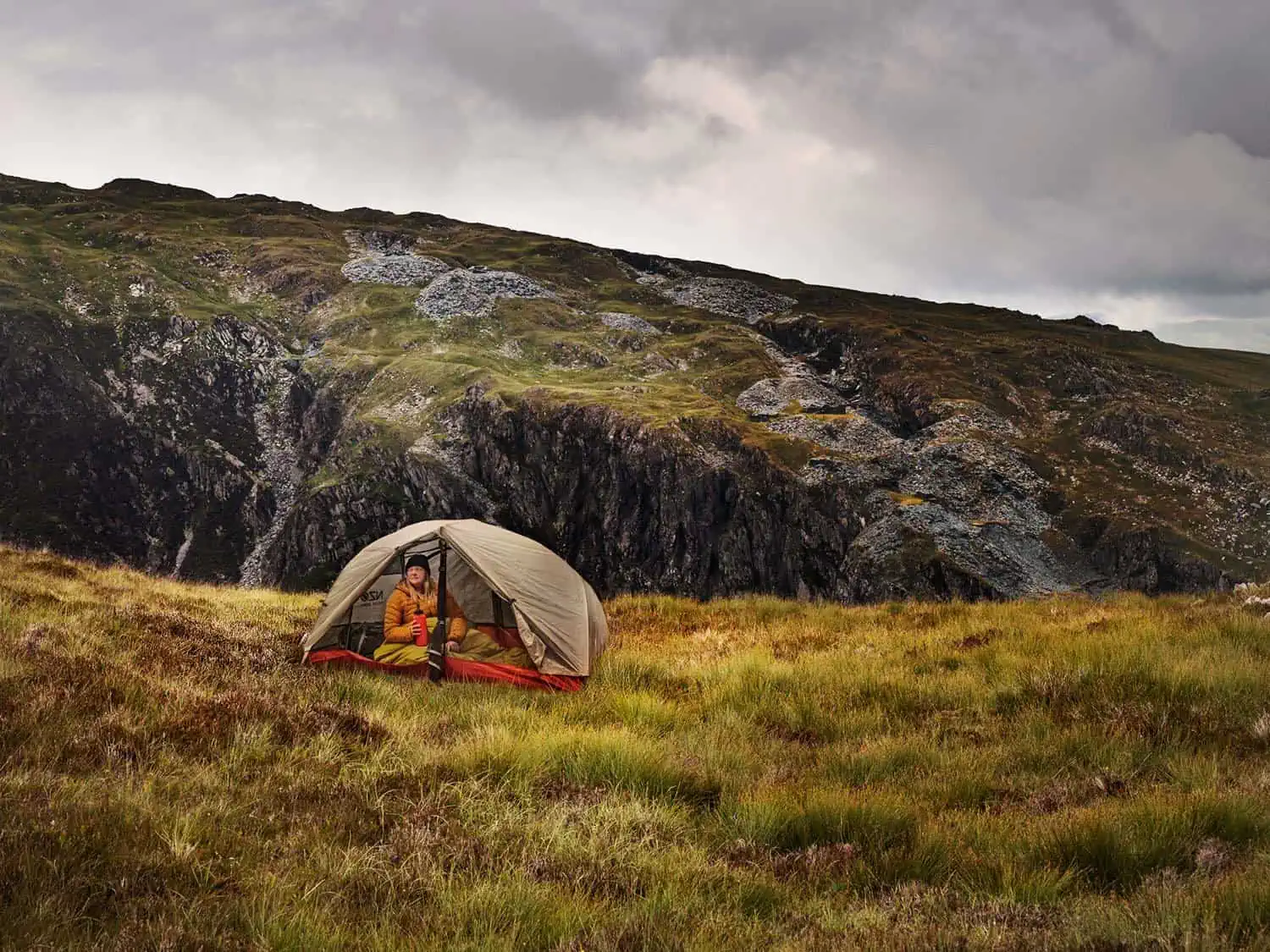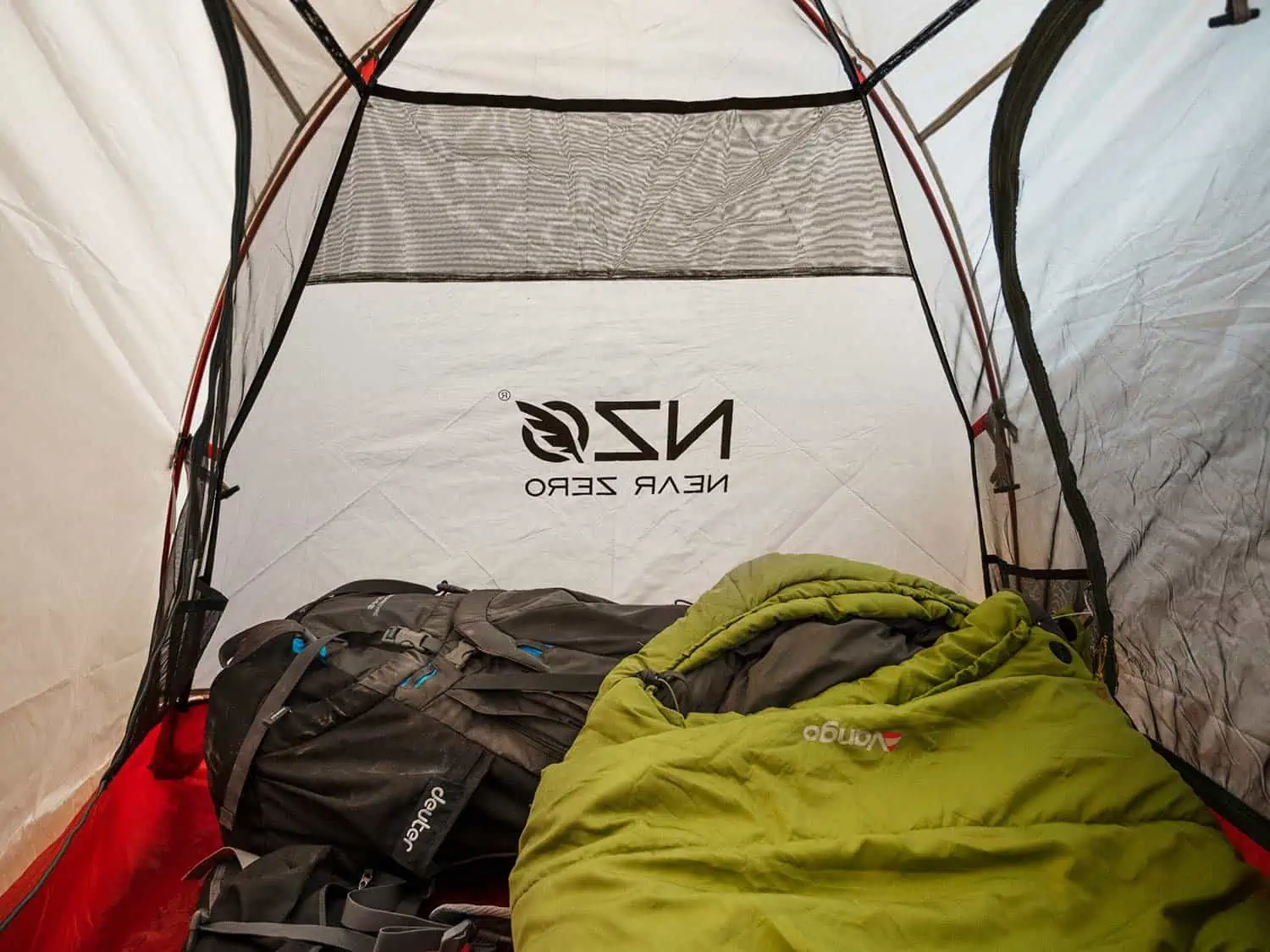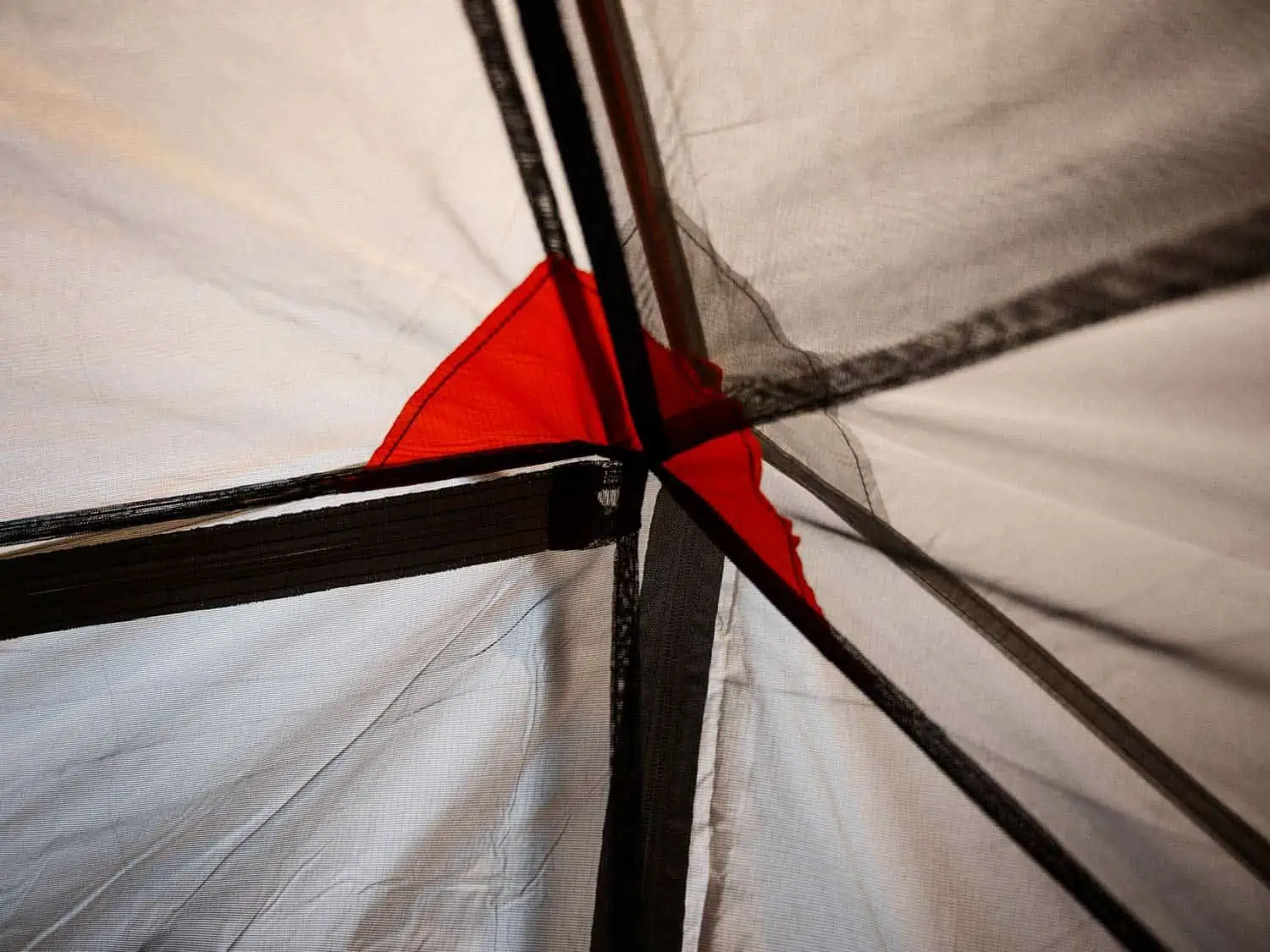The Near Zero Ultralight is a very appealing product. Whilst it’s not as absolutely light as its name suggests, it does offer a very appealing ratio of price to performance.
Table of Contents
TogglePros / Reasons to Buy
- Compares very favourably to much more expensive tents
- Packs down small
- Very easy to pitch
Cons / Reasons to Avoid
- If weight is your absolute priority, there are better options (but at a cost!)
- Inside could feel cramped – especially if there’s two of you
- Plastic clips for attaching fly could be a weak point in durability
Verdict
We were impressed by the Near Zero Ultralight. Whilst it doesn’t seem worthy of its ‘Ultra Light’ name in comparison to some of the other tents we reviewed, it’s still very far from heavy and above all else it offers a great value proposition when its price is taken into account. It certainly isn’t cheap, but spec wise, it comes close to tents costing considerably more and we think that for many potential buyers, this cost to performance ratio will be very appealing indeed. Looking beyond weight, we found the tent to be thoughtfully designed and colour coding on key components made pitching it as easy as you could hope for.
Compare to Similar Products
Main review and roundup: 25 Best Small 2 Person Backpacking Tents
- MSR Hubba Hubba Backpacking Tent
- Nemo Dagger OSMO Ultralight Backpacking Tent
- Big Agnes Copper Spur HV UL Backpacking Tent
Analysis and Test Results
Near Zero – sometimes stylised as ‘NZO’ – specialise in producing lightweight camping and hiking gear which they also offer at very keen prices relative to some of the other lightweight brands on the market. Whilst we’ve assessed other tents that come in lighter (sometimes noticeably lighter) and with smaller packed volumes than the Near Zero Ultralight, it can still absolutely call itself small and light in both regards and what’s more it comes in at an attractive price point: it’s not cheap at all, but it’s markedly less pricey than some competitors that offer only minimal advantages in terms of weight and packed size, proving that you really do pay for minimal gains! With this in mind we think the tent is worthy of attention for those who can’t afford or justify the price of the more costly tents in this round up.
Performance Comparison
Comfort
This tent makes use of an asymmetric, tapered design – no doubt to save weight. One end of the tent is narrower than the other and the roof is also lower at one end. This is a great way for the manufacturer to save weight, but it also means that the way you can use the tent is more limited. If there’s two of you inside, you can’t sit facing each other or sleep head to toe without one person being more cramped than the other.Whether this bothers you or not is a personal call, but in our experience, it can certainly become noticeable if bad weather confines you to the tent.
The tent offers two well sized vestibule areas for gear storage – they are plenty big enough for a large backpack, boots and poles etc. It also offers an entrance on both sides – a real bonus if you need to enter or get out of the tent without disturbing a sleeping partner – and, as you’d expect there’s a wide range of internal pockets to help keep your stuff organised when in use.
Weather Resistance
The inner body of the tent makes extensive use of mesh, but the fly sheet is, as you’d expect it to be, fully waterproof. The tent is rated for three seasons and, whilst we wouldn’t take it out in exceptionally stormy conditions, it could certainly be used beyond three seasons in milder climates. In warmer conditions, the fly sheet can, of course, be completely removed for a much cooler, better ventilated sleeping experience that still offers full protection from insects.
Weight
The Near Zero Ultralight weighs in at 1.78kg or 3lb 15oz complete, and, of course, this can be reduced if you leave out various unnecessary components. It is certainly not the most ultra light of the tents we’ve assessed here but it still definitely comes in at the lighter end of things and it is very far from being a heavy tent. We must also consider this tent’s weight alongside its cost: The lighter tents we can compare the Near Zero Ultralight to generally cost considerably more and, as we well know, very few of us have the luxury of an unlimited purchasing budget! On its own, the weight of this tent may not impress, but when considered alongside the price, the Ultralight strikes a very attractive balance.
Packed Size
Packed down, the Near Zero Ultralight comes in at just over 48x11cm or 19×4.5in. The packed size and therefore volume of the Near Zero Ultralight is not the absolute smallest in our round up, but the tent holds up very well here – being more compact packed down than some far more expensive tents. We think packed size – and therefore volume – is an important factor as a small difference here can influence other choices in your kit, like the size of backpack you need to bring (this, of course, assumes you have a wide range of gear to choose from). Generally, a smaller pack will be lighter than a larger one and this could help close the weight gap between the Ultralight a lighter tent that doesn’t pack down so small.
Durability
We have no major concerns about the durability of this tent. All the components and the fit and finish felts good to us. Like most of the other tents in this round up, the Near Zero makes extensive use of thin ripstop nylon in its construction – with a 20 Denier weight here. The material may seem thin, but it’s well proven for durability in lightweight outdoors gear and can easily be patched in the field if you do run into any mishaps. Plastic buckles are used to attach the fly to the tent body. These lie on the ground at the edges of the tent when setting it up or breaking it down and we also think there’s a risk of accidentally shattering one if it’s accidentally stood on when on a hard surface, but in reality, we’ve had tents that use similar systems for years and have never experienced this problem. Near Zero formally offer a one year warranty, but also have a commitment to offer, in their own words, ‘superior customer service’ beyond this.
Ease of Setup
We were impressed by the easy setup of the Near Zero Ultralight. The tent has an asymmetric footprint – that means the tent body tapers in terms of width at one end and roof is also lower at the narrow end. This is a great way for the manufacturer to cut down on weight, but, as mentioned above, it also impacts the sense of internal space in the tent. In terms of pitching the tent, it also means that you need to be aware that the poles, tent body and fly sheet all need to be oriented in the correct way relative to each other. This may not seem like a big deal, but it can be a real hassle when pitching the tent in poor light or weather. To help out here, Near Zero have colour-coded the grommets, clips and pole ends on all the tent’s components to making orienting everything correctly as easy as it can be. It might seem like a small and obvious detail, but other manufacturers don’t’ do this and we really found it helpful! On top of the printed instructions provided with the tent, Near Zero also provide a particularly good quick setup video on their site, which is well worth a look.
We cannot stress enough that you should familiarise yourself with pitching and breaking down any new tent before eyou head off onto the trail. This is especially the case if you are not already familiar with pitching tents or if you haven’t done so for a while.
Price
At the time of writing, the Near Zero Ultralight costs $299.99/$347.76. It’s not exactly cheap, but when you compare it to similarly spec’d competitors, you realise that whilst they may beat it in terms of light weight, the Nero Zero comes out on top in terms of price. For example, compared to the MSR Hubba Hubba, the Near Zero Ultralight is 380g (approx. 13.4oz) heavier, but also over £130 or $150 less expensive. We are sure that many hikers will happily trade that extra weight for a cost saving of that magnitude.
Conclusion
We like the Near Zero Ultralight a lot. Looking at the stats in isolation, there are other tents in our round up that are superior in every way, but where the Ultralight really wins out in our opinion is what if offers for the cost. Certainly there are other options that are lighter without compromising durability or space – and they do so by a margin that cannot be ignored – but this always comes with a price premium and, whilst the Ultralight is far from cheap, it’s also far from the cost of some other tents it competes against. Put simply, we think that for the price, it punches above its weight! If affordability is a concern, or if you can’t justify the cost of some of the other alternatives, but if you can spend a bit more than some of the more budget options, then the Near Zero Ultralight certainly deserves your attention.
Disclaimer: This article contains Affiliate Links. You won’t pay any more for buying through these links, but we may receive a commission from any purchases made through them. As an Amazon Associate, I earn from qualifying purchases. If you choose to support us by buying through our links, we thank you as it helps us to continue providing the resources we do to help you enjoy the outdoors more!




